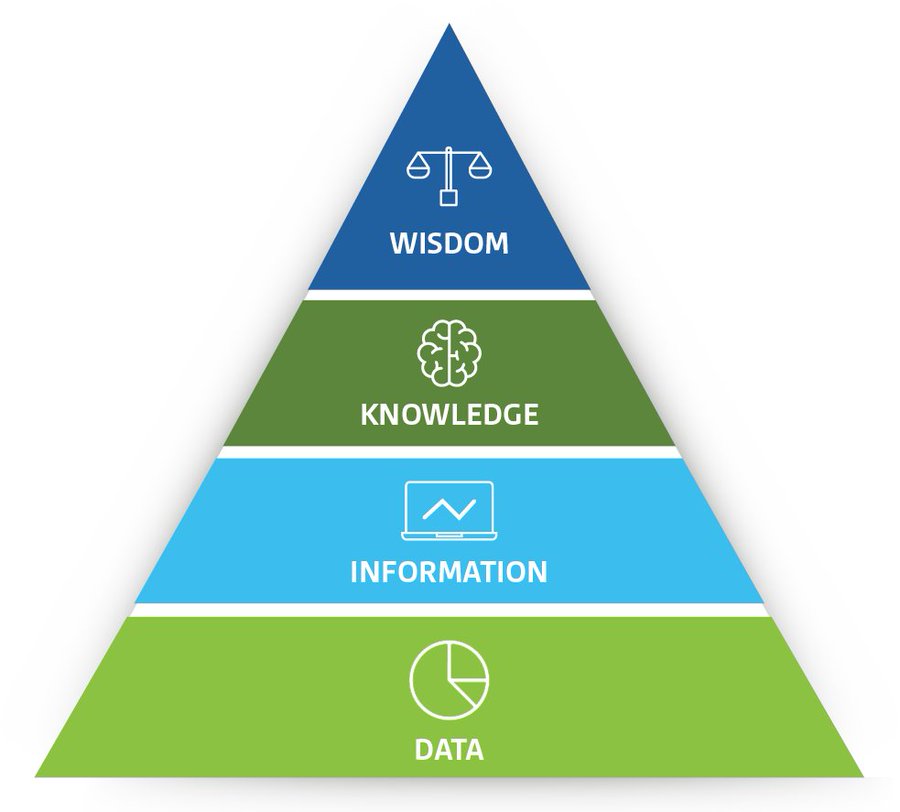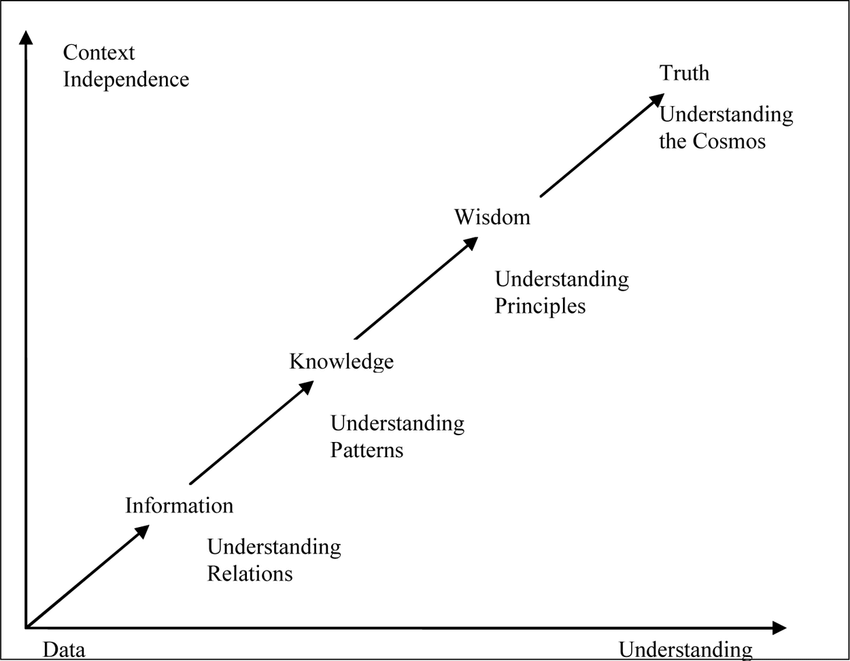The DIKW Pyramid (Data, Information, Knowledge, Wisdom)
The DIKW Pyramid (Data, Information, Knowledge, Wisdom)
The DIKW Pyramid represents the relationships between data, information, knowledge and wisdom. Each building block is a step towards a higher level - first comes data, then is information, next is knowledge and finally comes wisdom. Each step answers different questions about the initial data and adds value to it. The more we enrich our data with meaning and context, the more knowledge and insights we get out of it so we can take better, informed and data-based decisions.

Data
Data is a collection of facts in a raw or unorganized form such as numbers or characters.
However, without context, data can mean little. For example, 12012012 is just a sequence of numbers without apparent importance. But if we view it in the context of ‘this is a date’, we can easily recognize 12th of January, 2012. By adding context and value to the numbers, they now have more meaning.
In this way, we have transformed the raw sequence of numbers into
Information
Information is the next building block of the DIKW Pyramid. This is data that has been “cleaned” of errors and further processed in a way that makes it easier to measure, visualize and analyze for a specific purpose.
Depending on this purpose, data processing can involve different operations such as combining different sets of data (aggregation), ensuring that the collected data is relevant and accurate (validation), etc. For example, we can organize our data in a way that exposes relationships between various seemingly disparate and disconnected data points. More specifically, we can analyze the Dow Jones index performance by creating a /graph of data points for a particular period of time, based on the data at each day’s closing.
By asking relevant questions about ‘who’, ‘what’, ‘when’, ‘where’, etc., we can derive valuable information from the data and make it more useful for us.
But when we get to the question of ‘how’, this is what makes the leap from information to
Knowledge
“How” is the information, derived from the collected data, relevant to our goals? “How” are the pieces of this information connected to other pieces to add more meaning and value? And, maybe most importantly, “how” can we apply the information to achieve our goal?
When we don’t just view information as a description of collected facts, but also understand how to apply it to achieve our goals, we turn it into knowledge. This knowledge is often the edge that enterprises have over their competitors. As we uncover relationships that are not explicitly stated as information, we get deeper insights that take us higher up the DIKW pyramid.
But only when we use the knowledge and insights gained from the information to take proactive decisions, we can say that we have reached the final – ‘wisdom’ – step of the Knowledge Pyramid.
Wisdom
Wisdom is the top of the DIKW hierarchy and to get there, we must answer questions such as ‘why do something’ and ‘what is best’. In other words, wisdom is knowledge applied in action.
We can also say that, if data and information are like a look back to the past, knowledge and wisdom are associated with what we do now and what we want to achieve in the future.

The progression from data to information to knowledge to wisdom is an emergent continuum. The teleology of such a progression is the truth. One progresses along the continuum as the actors’ understanding develops. Everything is relative and one can have partial understanding of the relations that represent information, partial understanding of the patterns that represent knowledge, partial understanding of principles, which are the foundation of wisdom and the constructed truth of the respective actor.
